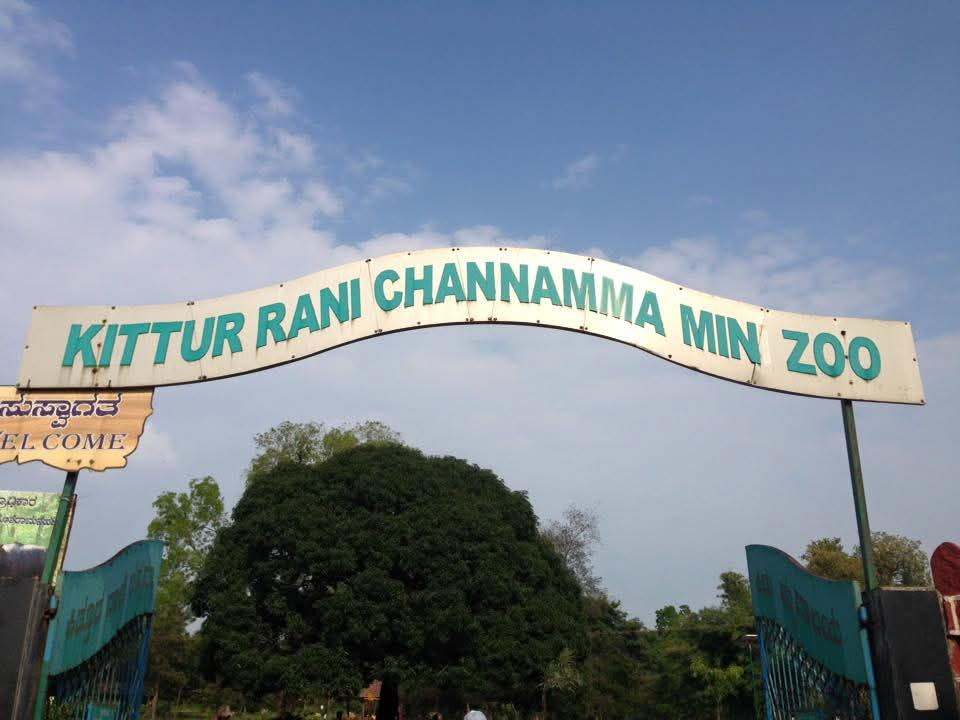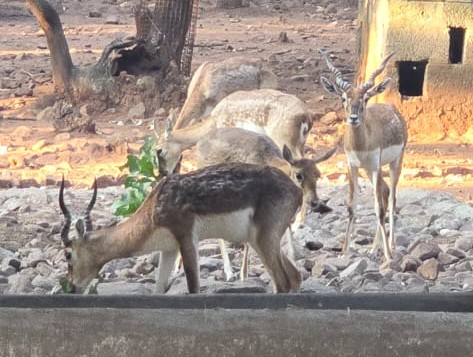
Meera Bhardwaj:
In the aftermath of massive blackbuck deaths at Belagavi Zoo, the remaining seven are recovering and stable now as seen in the above picture. However, they are being monitored 24*7 by an expert team set up by the state government. Out of 38 blackbucks at the Kittur Rani Channamma Zoo, 31 died due to a highly fatal bacterial infection between November 13-17, 2025.
This is the first time in Karnataka’s zoo history that after an outbreak of a highly fatal bacterial disease like HS that seven blackbucks (that are considered very fragile and delicate), have survived.
However, this has been possible only due to 24/7 monitoring of the infected blackbucks and effective treatment by veterinarians and the animal keepers. This was possible only after setting up of an expert team comprising scientists and wildlife veterinarians by Forest, Ecology and Environment Minister Eshwar Khandre.

ALL SAFETY PROTOCOLS
The Kittur Rani Channamma Zoo staff and forest officials implemented a total quarantine and bio-safety protocol measures after the outbreak of Haemorrhagic Septicaemia (HS), a fatal bacterial infection. This had caused the deaths of 31 blackbucks in the Belagavi Zoo. The 38 blackbucks which had been procured from Binkadakatti Zoo, Gadag and other locations were relocated to the Belagavi Zoo a few years ago.
Speaking to Green Minute, DCF, Belagavi division N E Kranthi said, “All the remaining seven blackbucks are active and normal. We are carefully monitoring the situation of all animals in the Zoo. To prevent the spread of the bacterial disease, distance has been maintained and barricades installed wherever needed. Disinfectant has been applied in all the zoo area to protect all the 195 animals.”

IMMUNE BOOSTING FOOD TO HERBIVORES
Presently, seven blackbucks that have survived – have been completely isolated from other animals. Further, the DCF added, “On the advice of the expert team that was sent by the state government, we are providing immune boosting food to all the herbivores like spotted deer, sambar and four-horned antelopes. We have followed all the advice given by expert team members for the safe upkeep of all animals in the Belagavi Zoo.”
Meanwhile, according to the Forest Ministry sources, it was Dr Manjunath Reddy and Dr Chandrashekar from the Indian Institute of Animal Health and Veterinary Biologicals (IAH & VB) conducted the vital early disease investigation and diagnosis, identifying Haemorrhagic Septicaemia as the cause of the outbreak among blackbucks. Their scientific work laid the foundation for effectively tackling the outbreak.

COMPREHENSIVE VET RESPONSE
Chief Wildlife Veterinarian Dr Prayag, Zoo Vet Dr Nagesh and Zoo Curator Pavan then led the comprehensive veterinary response, overseeing treatment of surviving blackbucks, strictly imposing quarantine, and implementing strict bio-security measures. Their leadership was crucial in containing the outbreak, preventing further deaths, and enhancing disease control protocols.
All these efforts were carried out under the able guidance and supervision of Dr Sunil Panwar IFS, Member Secretary, Zoo Authority of Karnataka (ZAK), Manjunath Chavan, CCF, Belagavi Circle, DCF N E Kranthi and ACF Belagavi Sub-division Nagaraj. Forest officials, said their oversight ensured coordinated action, adherence to protocols, and support in managing this wildlife health emergency, reflecting a collaborative approach between scientific expertise, veterinary leadership, and administrative governance to address the crisis effectively.
(PHOTO CREDIT: ALL IMAGES FROM KARNATAKA FOREST DEPARTMENT)
